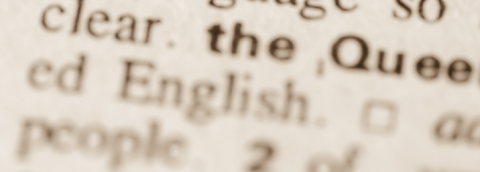
No matter whether you are writing a report, doing a presentation or sending a short email to a colleague, if this is not done in your native language, you have to translate. But which techniques are useful when translating a text from a source language into a target language?
Of course you need appropriate language skills. But even if you can express yourself relatively well in a foreign language, you face completely new challenges when translating a somewhat longer and more challenging text.
The “quick & dirty” method:
First, read the text to understand the content. Unknown words or difficult wording can be dealt with later as long as the content is relatively comprehensible. If your document is line text and not confidential try using Google translate https://translate.google.com/. This is a great way to kick-start the process. Then proceed to review sentence by sentence. Unknown words must be looked up, the sentence structure respected and the original style maintained. The meaning and the grammatical framework must be preserved so that the translation does not differ too much from the source text in the end. But watch out, this kind of machine translation is only an aid and not accurate. The trick is to keep your sentences short.
Use reference documents:
If you have other closely related documents or can even find something similar in the Internet, as long as you respect copyright, this material can provide you with a springboard to launch your own translation. Should there be very little similar text material, then look for translated sentences, or even chunks of sentences that can be pasted together. Linguee at https://www.linguee.de/ is a useful reference point here as it offers vocabulary and sentences in context. You can select from the translated sentences offered. But again beware, not all sentences are accurate and not all have been translated by native speakers. And, it certainly pays to check key vocabulary as the meaning may change in different contexts.
How closely should you remain to your source text?
Rarely can a sentence be translated on a word-for-word basis into the target language. Often a phrase or verb has to be treated differently as grammatical or lexical forms may differ. Sometimes a text has to change slightly i.e. be localized to the target group and to take into account special cultural conventions. This is not only a question of grammar and terminology, but also style and target audience preferences. Remember to consider the purpose of the translation – are you making a product sound attract and exciting, or simply reporting facts and figures?
Staying too closely to the source language may make your translation sound wooden and unnatural. A good translation conveys meaning, tone and register into the target language. But it must also read naturally, so it pays to have a native speaker do a proof read if possible.
On the other hand your translation might have to do more than just convey meaning; it might have to appeal to specific readers – thus style and the use of key expressions or vocabulary also play a role. Some languages require up to 30% more words, so if you are short of space, then your translation will need adapting.
As with any translation it’s important to work accurately and precisely. Once you have finished your draft text you can concentrate on refining it and eliminating errors to ensure accuracy and appropriate style. Finally, it is a good idea to print a copy of your translation and proof read it this way. Your eye picks up errors quickly this way and reading from paper helps ensure higher quality text.



